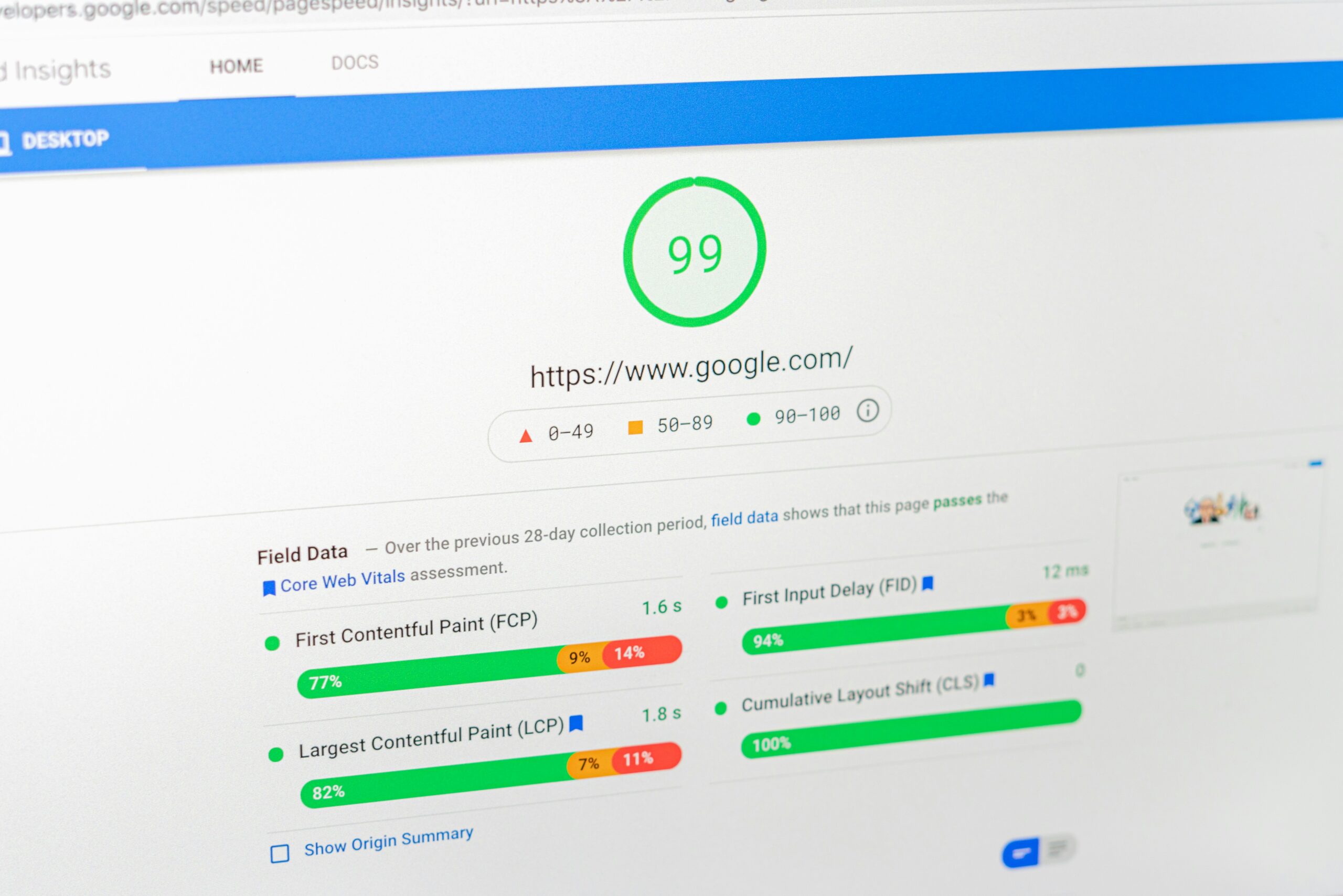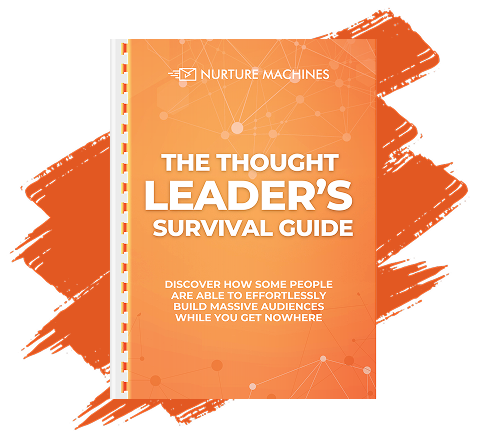In today’s digital-first landscape, converting curious visitors into loyal customers requires more than just great marketing—it demands a strategically optimized sales funnel. Sales funnel optimization is the key to guiding prospects through each stage of the buyer journey with purpose and precision. From lead capture to final conversion, every interaction matters. With tools like automation, behavior tracking, and segmentation—services offered by platforms such as Nurture Machine—businesses can eliminate friction, personalize outreach, and improve performance across the board. This guide dives into how to refine your funnel, increase conversion rates, and drive sustainable growth through data-driven strategies.
Key Takeaways
- Sales funnel optimization is crucial for converting leads into loyal customers and boosting revenue.
- An effective sales funnel follows a systematic approach from lead capture to conversion.
- Data analytics and CRO help identify and eliminate funnel bottlenecks.
- Expert consulting and ongoing training further enhance funnel management.
- Trends like AI automation and integrated marketing strategies continue to evolve sales funnels.
What Is Sales Funnel Optimization and Why Is It Crucial for Lead Generation?

Sales funnel optimization improves every step in the buyer journey, from initial contact to final conversion. It focuses on making each touchpoint more efficient through design improvements, automated workflows, and strategic communication. By removing obstacles—like confusing layouts or delayed responses—brands can nurture more qualified leads. Refining elements such as landing pages, emails, and CTAs boosts both engagement and ROI. Continuous updates and testing keep the strategy relevant and responsive to evolving user behavior.
How Does a Sales Funnel Drive Lead Generation?
A sales funnel moves potential customers through a structured path, starting with broad outreach and narrowing toward high-intent actions. Each stage builds on the last: awareness draws attention, interest encourages interaction, and deeper stages drive decision-making. Automated emails and targeted content nurture users based on behavior. Integrated analytics show where users drop off, so marketers can refine those steps. This system filters out unqualified leads and amplifies high-potential ones. The result is stronger lead quality and increased conversions.
What Are the Key Stages of an Effective Sales Funnel?
An optimized funnel includes stages such as awareness, interest, consideration, intent, evaluation, and conversion. Each step is tailored to guide the user toward the next action. For example, awareness involves broad content like ads or blogs, while consideration features in-depth information. Intent stages showcase offers or CTAs to prompt action. Evaluation allows for final decisions through follow-ups or incentives. Conversion should be frictionless, leading to a sale or sign-up. Each stage must be linked and informed by behavior data.
How Does Optimizing Each Funnel Stage Improve Conversion Rates?
Refining each funnel stage increases the likelihood of users progressing smoothly. Better headlines, cleaner forms, and automated messaging help reduce bounce and increase interaction. Personalization ensures users see content that fits their needs. Tracking metrics—like click-through or open rates—reveals which stages need improvement. Iterative changes using A/B testing can lift conversion significantly. Using automation allows real-time updates to be based on behavioral triggers. Over time, this results in fewer abandoned sessions and stronger ROI.
Which Sales Funnel Optimization Tips Deliver the Best Lead Generation Results?

Effective funnel optimization combines data analysis, user behavior insights, and design best practices. Marketers must analyze each stage’s performance and address underperforming areas. Automation plays a big role in personalizing outreach without adding manual effort. Using a range of tools for testing and analytics ensures informed decisions. Design tweaks based on session recordings and feedback often yield big improvements. These combined efforts make each touchpoint more compelling and conversion-friendly.
How to Conduct Funnel Audits and Analyze Performance Data?
Start by gathering data from all funnel-related systems, including web traffic, form fills, and email platforms. Map out the entire customer journey to visualize where people exit. Segment users by demographics or behavior to better understand their paths. Use visual tools—like flowcharts or heat maps—to highlight weak spots. Each section should be evaluated against benchmark KPIs like open rates or bounce rates. This audit helps prioritize what changes will create the greatest impact. Funnel audits are crucial for strategic, data-led improvement.
What Are Best Practices for Lead Capture Form Optimization?
Keep forms short and relevant—ask only for necessary details to avoid user fatigue. Use strong, clear CTAs with high-contrast design to draw focus. Make sure forms are responsive for all devices and simple to complete. Trust signals like badges or user ratings can help reduce hesitation. Test different versions of form design, copy, and placement using split testing. Integrate with automation platforms to immediately trigger follow-ups. These practices help transform more visitors into captured leads.
How to Create and Test High-Converting Landing Pages?
Landing pages should have one clear goal—such as lead capture—and remove anything that distracts from it. Focus headlines on immediate value, not just features. Use benefit-led copy, simple navigation, and attractive visuals. Add trust signals like testimonials or security markers to reduce user doubt. Place CTAs above the fold and use directional cues to guide attention. Run A/B tests frequently, changing one element at a time—like the CTA color or form design. These refinements can dramatically lift conversion.
How Can Email Marketing Automation Enhance Funnel Efficiency?
Email automation delivers relevant content based on the user’s stage in the funnel. This speeds up the nurturing process and maintains engagement without constant manual input. Welcome emails, reminders, and behavior-based follow-ups are triggered at key moments. Segmentation allows for highly targeted messaging, improving open and click rates. Consistency builds brand trust, while personalization keeps the messages relevant. Campaign analytics show which sequences perform best. Over time, automation leads to higher conversions and better retention.
What Role Does A/B Testing Play in Continuous Funnel Improvement?
A/B testing allows marketers to experiment with variations of pages, CTAs, or emails to see what performs best. Instead of guessing, decisions are backed by measurable results. Testing one variable at a time makes it easier to pinpoint what caused changes in metrics. Continuous testing ensures that each funnel element is always aligned with user preferences. Small improvements in form copy or CTA wording can have significant impact. Over time, these incremental gains boost overall funnel performance.
What Are the Best Lead Capture Strategies to Increase Funnel Effectiveness?

Lead capture is most effective when combined with design simplicity, behavioral targeting, and clear incentives. Using short, smart forms reduces entry friction. Add compelling CTAs and align them with high-value offers like free trials or downloads. Use behavior tracking to trigger pop-ups or exit-intent forms. Incorporate social proof like user testimonials near form fields. Automate the follow-up process to keep leads warm. These steps together create a seamless experience that boosts conversions.
How to Design Lead Capture Forms That Convert?
Use a clean, minimal layout that’s easy to navigate on mobile and desktop. Limit the number of fields to those absolutely necessary—typically name and email. Use benefit-driven CTAs that prompt immediate action. Add elements like trust seals, security badges, or brief testimonials near the form. Consider auto-filling fields when possible to speed up the process. Run tests on form length, field order, and button wording. Optimized forms increase user confidence and lead capture success.
Which Incentives and Offers Boost Lead Sign-Ups?
Incentives that offer real value work best—such as exclusive downloads, free tools, or limited-time offers. Early access to content or trials can drive urgency. Use bold, benefit-focused language to highlight the offer’s value. Time-limited deals or countdown timers add motivation. Visual cues like arrows or badges can draw attention to incentives. Display testimonials or usage stats near the offer to build credibility. These strategies make the lead capture exchange feel rewarding.
How to Integrate Lead Capture With Email Marketing and CRM Systems?
Seamless integration ensures new leads are nurtured immediately. Connect forms to your email marketing tool via API or built-in connectors. Use CRM tagging to assign the lead to a segment based on behavior. Trigger automated welcome emails that offer next steps or useful content. Track responses within the CRM to refine future messaging. Ensure that all systems sync regularly to avoid data gaps. This setup keeps the entire process fluid and scalable for long-term lead nurturing.
How to Build and Optimize Landing Pages for Maximum Lead Conversion?

A well-structured landing page focuses on one primary goal—typically lead capture or conversion. Every design element should guide users toward this action. Use compelling headlines, persuasive copy, and minimal distractions. Trust indicators like user reviews or badges build credibility and reduce hesitation. The page must be mobile-optimized and load quickly. Ongoing testing and refinement ensure performance remains strong as user preferences evolve. Data from heat maps and scroll tracking help pinpoint improvement areas.
What Elements Make a Landing Page High-Converting?
High-converting pages start with a strong, benefit-focused headline. Use clear subheadings to build interest and move users toward the action. Visuals should support the message without overwhelming it. Add persuasive CTAs with contrast and urgency. Keep the design focused—eliminate links or content that distract from the goal. Use elements like trust badges or brief testimonials to increase user confidence. Ensure forms are short, intuitive, and mobile-friendly. Together, these features raise the likelihood of conversion.
How to Use A/B Testing to Refine Landing Page Performance?
Create two versions of the landing page with just one changed element—such as CTA color, layout, or form copy. Direct equal traffic to both versions and track key metrics like conversion rate and bounce rate. Analyze results to determine the better performer. Apply that change, then test the next element. Repeat the process to gradually improve the page. Focus on high-impact areas first, like headlines and CTA buttons. This approach delivers measurable gains over time.
Which Common Landing Page Mistakes Should You Avoid?
Avoid packing in too much content—keep messaging focused and direct. Don’t use vague headlines that fail to explain value. Avoid cluttered designs, hard-to-find CTAs, or forms with too many fields. Poor mobile optimization or slow load times hurt engagement. Forgetting to test and update layouts limits improvement. Finally, leaving out trust indicators can reduce user confidence. Addressing these issues ensures that the landing page supports funnel goals and converts more visitors into leads.
How Does Expert Consulting and Training Enhance Sales Funnel Optimization?

External experts bring deep knowledge of funnel strategies, tools, and behavior analytics. They can identify issues that internal teams may overlook. By applying proven frameworks and diagnostic tools, consultants deliver targeted solutions that enhance performance. Meanwhile, structured training programs upskill your team to maintain improvements independently. Both services speed up problem resolution, increase productivity, and keep your funnel aligned with business goals. This combination provides a strong foundation for long-term success.
What Are the Benefits of Professional Funnel Audits and Recommendations?
Expert audits highlight inefficiencies in funnel performance using detailed behavior tracking and diagnostics. These professionals benchmark your data against proven standards and identify quick wins. Their reports come with prioritized action plans and tech stack recommendations. The objective perspective helps prevent blind spots and ensures a scalable growth strategy. Expert input also helps teams align around funnel goals. With better data clarity and implementation support, optimization efforts gain traction faster.
How Can Training Improve Your Team’s Funnel Management Skills?
Training equips your team to manage funnel components confidently. Workshops often cover data interpretation, A/B testing, segmentation strategies, and automation setup. Teams learn how to diagnose issues, apply fixes, and track performance improvements. Practical sessions focus on real tools and live analytics dashboards. This hands-on experience boosts retention and builds team ownership. When teams understand the “why” behind funnel stages, their decisions become more strategic and aligned. Continuous learning ensures long-term adaptability.
When Should You Consider Outsourcing Funnel Optimization Services?
Outsourcing is ideal when in-house resources are stretched thin or lack specific expertise. If existing funnels consistently underperform despite internal tweaks, external help can offer fresh insights. Agencies bring access to advanced tools and frameworks that are costly to implement internally. They also work faster and offer structured reporting. Outsourcing is also smart during large campaigns or platform transitions. The goal is to unlock quick wins while establishing systems your team can sustain.
How to Implement a Topic Cluster Model and Internal Linking for Funnel Content?

Organizing content with a topic cluster model improves SEO and user experience. A central pillar page covers the core topic in detail, while subtopics dive into related specifics. Internal linking between these pages guides readers along a logical path. This structure helps search engines understand your content hierarchy. It also encourages longer time on site and increased lead interaction. These links lead users from broad awareness to deeper interest and eventual conversion.
What Is a Topic Cluster Model and Why Does It Matter for Sales Funnels?
A topic cluster starts with a central, comprehensive page about a key topic. Related blog posts or guides support it by exploring subtopics in detail. Internal links connect these pages, reinforcing thematic relevance. This setup improves visibility in search engines and guides leads through a structured content flow. It helps build authority on a subject, encouraging users to continue reading. For funnels, this means smoother progression from awareness to action without content gaps.
How to Use Internal Linking to Boost Funnel-Related Content Authority?
Strategically link between content pieces that address different funnel stages. Use descriptive anchor text to tell users what to expect when they click. Link from high-traffic blog posts to more targeted conversion content. Connect FAQs to landing pages or guides to service pages. This keeps users engaged longer and exposes them to additional offers. Internal linking also distributes SEO value across your site. Together, this raises funnel efficiency and builds brand trust.
Which Schema.org Markup Types Enhance Funnel Content Visibility?
Implementing Schema.org markup makes your content more understandable to search engines. Use types like “Article” for blogs, “FAQ” for question sections, and “BreadcrumbList” to define page hierarchy. These enhancements can generate rich search results, which boost visibility and click-through rates. Apply markup directly to HTML or through tag managers. Marked-up content improves relevance, helping drive more qualified traffic. This contributes to top-of-funnel awareness and helps pull users into your conversion path.
What Are the Latest Trends and Tools in Sales Funnel Optimization for Lead Generation?

Funnel optimization is increasingly driven by automation, data visualization, and behavior prediction tools. AI helps analyze patterns to refine targeting, while visual dashboards show how users interact with each stage. Marketing platforms now combine email, CRM, and analytics into a single hub. Interactive content and video are also growing in popularity, improving engagement at the top of the funnel. Staying ahead requires adopting these tools and continuously testing strategies for optimal performance.
How Are AI and Automation Shaping Funnel Optimization?
AI identifies behavioral patterns across user journeys and predicts next steps. This allows marketers to deliver personalized experiences in real time. Automation handles tasks like follow-up emails, lead scoring, and dynamic content updates. These tools reduce manual workload and accelerate funnel movement. Real-time decision-making based on user activity boosts conversion. Over time, AI refines strategies by learning what works best. This makes funnels smarter, faster, and more aligned with individual user needs.
Which Software Platforms Offer Comprehensive Funnel Solutions?
Platforms that combine marketing automation, CRM, and analytics offer the most value. They allow teams to manage the full funnel from one interface. Features often include visual builders for landing pages, built-in A/B testing, real-time reporting, and automated workflows. Many also offer audience segmentation and lead scoring tools. These platforms improve operational efficiency while boosting personalization. Whether for startups or enterprises, choosing the right tool speeds up funnel execution and simplifies optimization.
How to Stay Ahead With Continuous Funnel Testing and Analytics?
Adopt a mindset of ongoing improvement. Use A/B and multivariate testing to validate design, copy, and automation changes. Monitor funnel metrics weekly to spot drop-offs early. Incorporate heatmaps and session replays to understand user behavior visually. Apply those insights to refine layouts and messaging. Stay informed through newsletters, tool updates, and webinars. Test small, test often, and track everything. This proactive approach keeps funnels efficient, adaptive, and high-converting over time.
Frequently Asked Questions
What exactly is sales funnel optimization?
Sales funnel optimization is the process of refining each stage of the customer journey—from initial awareness to final conversion—to improve lead generation and drive higher conversion rates. It involves identifying friction points, analyzing customer behavior, and applying targeted strategies like A/B testing, automated follow-ups, and personalized content. With platforms like Nurture Machine, businesses can streamline this process using built-in tools for segmentation, omnichannel engagement, and smart automation.
How does data analytics improve the performance of a sales funnel?
Data analytics provides critical insights into user behavior across each funnel stage. Metrics like bounce rates, conversion rates, and click-through rates reveal where users drop off or lose interest. This allows marketers to make informed decisions about what to adjust—whether it’s a landing page layout or a CTA placement. Nurture Machine’s real-time analytics help businesses visualize funnel performance, measure campaign success, and uncover optimization opportunities with clarity and speed.
What role does A/B testing play in funnel optimization?
A/B testing validates which elements work best by comparing different versions of a page, form, or email. It helps fine-tune user experiences and drive higher conversion rates, fostering continuous improvement in the funnel.
Why is integrating email marketing automation with lead capture important?
Integration ensures every new lead is nurtured instantly with relevant messaging. When lead capture forms are connected to automated email sequences, businesses can deliver personalized content based on the user’s actions, interests, or funnel stage. This reduces response delays, builds trust, and boosts conversion rates. Nurture Machine enables seamless integration between forms, CRM data, and automated workflows, helping businesses create a cohesive and responsive user journey.Integration creates a seamless process where every new lead immediately receives targeted follow-up emails. This accelerates the conversion process, enhances personalization, and strengthens customer engagement and loyalty.
Can expert consulting really make a difference in optimizing a sales funnel?
Yes. Expert consulting offers a strategic advantage by identifying bottlenecks, recommending proven best practices, and implementing tools that align with business goals. When combined with hands-on training, teams become more skilled at using their platforms and interpreting performance data.
Conclusion
A meticulously optimized sales funnel is essential for converting prospects into loyal customers and maximizing revenue. By embracing data-driven strategies, robust A/B testing, and integrated marketing automation, businesses can create streamlined customer journeys that minimize friction and drive engagement. Continuous improvement—with the support of expert consulting and comprehensive training—ensures that every stage of the funnel remains efficient and responsive to market changes. Ultimately, mastering sales funnel optimization empowers businesses to convert more leads, nurture higher-value relationships, and sustain long-term growth.






